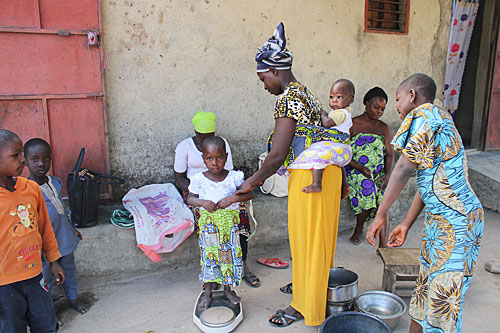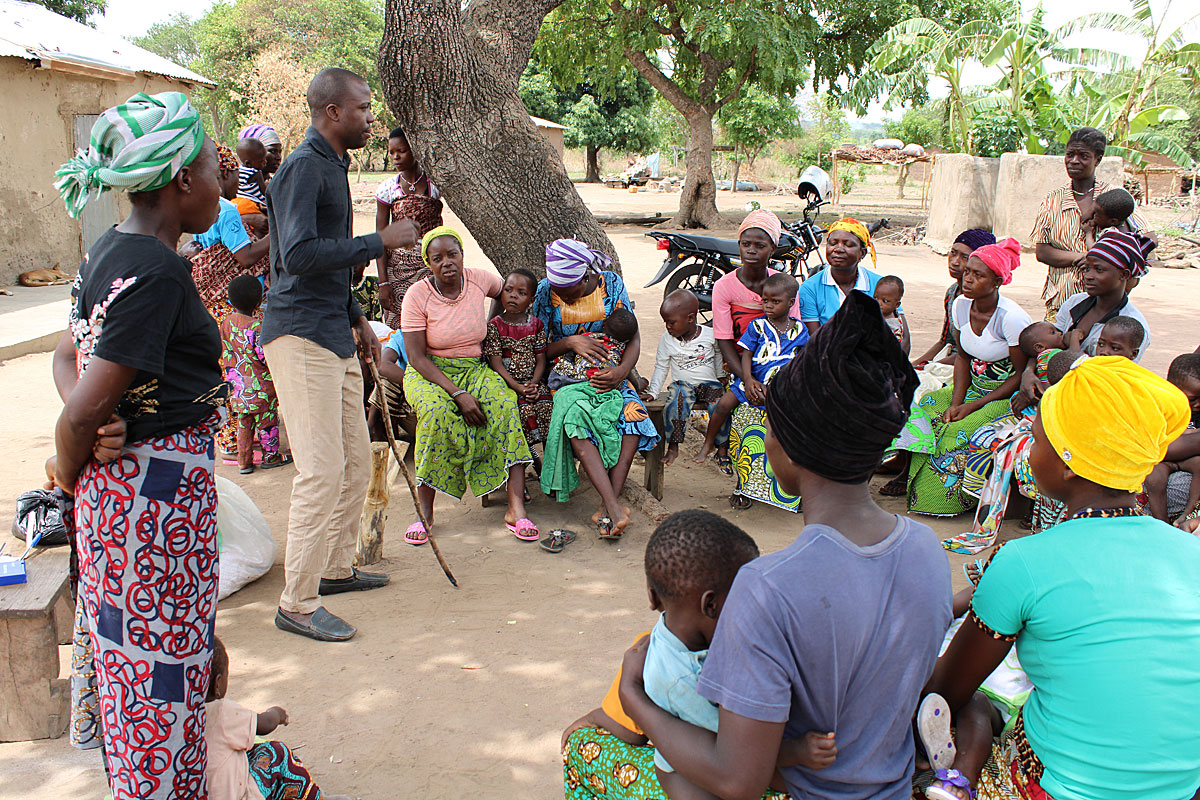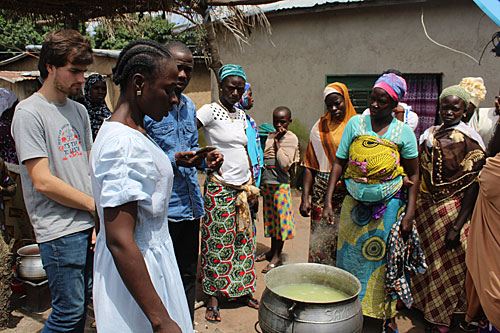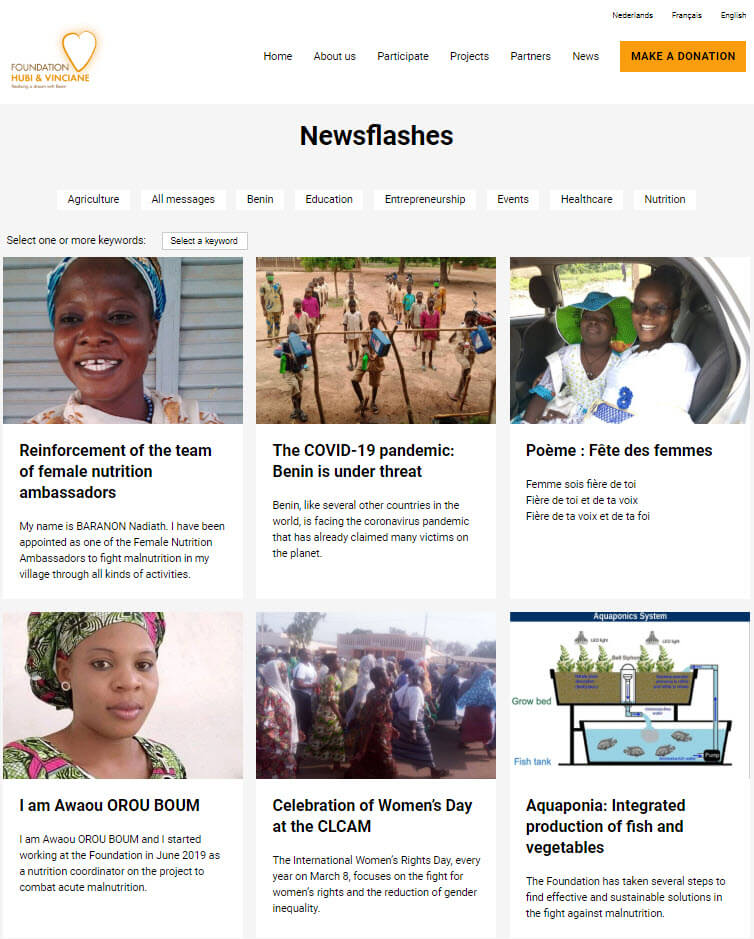Caring for malnourished children
The project
With the “Care for Malnourished Children” project, we aim to combat severe and moderate malnutrition in children under 5.
Objectives
We want to significantly reduce the number of deaths as well as prevent relapses and exacerbations.
Project description
Thanks to our ongoing screening campaigns, we have identified three types of malnutrition, each with appropriate treatment:
- Severe acute malnutrition without complications
(MAS or Malnutrition Aiguë sévère Sans complications)
Children suffering from that type of malnutrition are referred to outpatient nutrition centres in local health centres.There, they receive treatment based on ready-made therapeutic food and, if necessary, medication according to the national care protocol. - Severe acute malnutrition with complications
(SAMAC or Malnutrition Aiguë sévère Avec Complications)
Children with that type of malnutrition are admitted to therapeutic feeding centres in hospitals. According to the national care protocol, they are cared for there for an average of two weeks. The Foundation covers all treatment costs and provides follow-up care during and after treatment. - Moderate acute malnutrition
(MAM or Malnutrition Aiguë Modérée).
Children with moderate acute malnutrition are treated in their villages, in the Foyers d’Apprentissage et la Récupération Nutritionnelle (FARN). They receive enriched local food there. During cooking workshops organized by the FARN, mothers learn how to make their children’s diet more balanced and rich with locally available foods.
After the intensive treatment period, our social workers continue to follow up with the children at home for two to three months. During these home visits, they advise family members about healthy eating habits and good hygiene practices. They also measure and weigh the patients each time.
Results and developments
Between 2019 and the end of 2023, we diagnosed more than 2,000 children with acute malnutrition with and without complications. Almost all those children (95%) received treatment at ambulatory nutrition centres.
Thanks to the rapid and preventive interventions among moderately acutely malnourished children, we managed to reduce the percentage of severely malnourished children from 3.15% in 2019 to 0.35% in 2023.
Nevertheless, there are still children who die as a result of malnutrition. After all, parents – for various reasons – do not always permit their children to receive treatment. By engaging in dialogue with the local community and government, we hope solve this problem.





